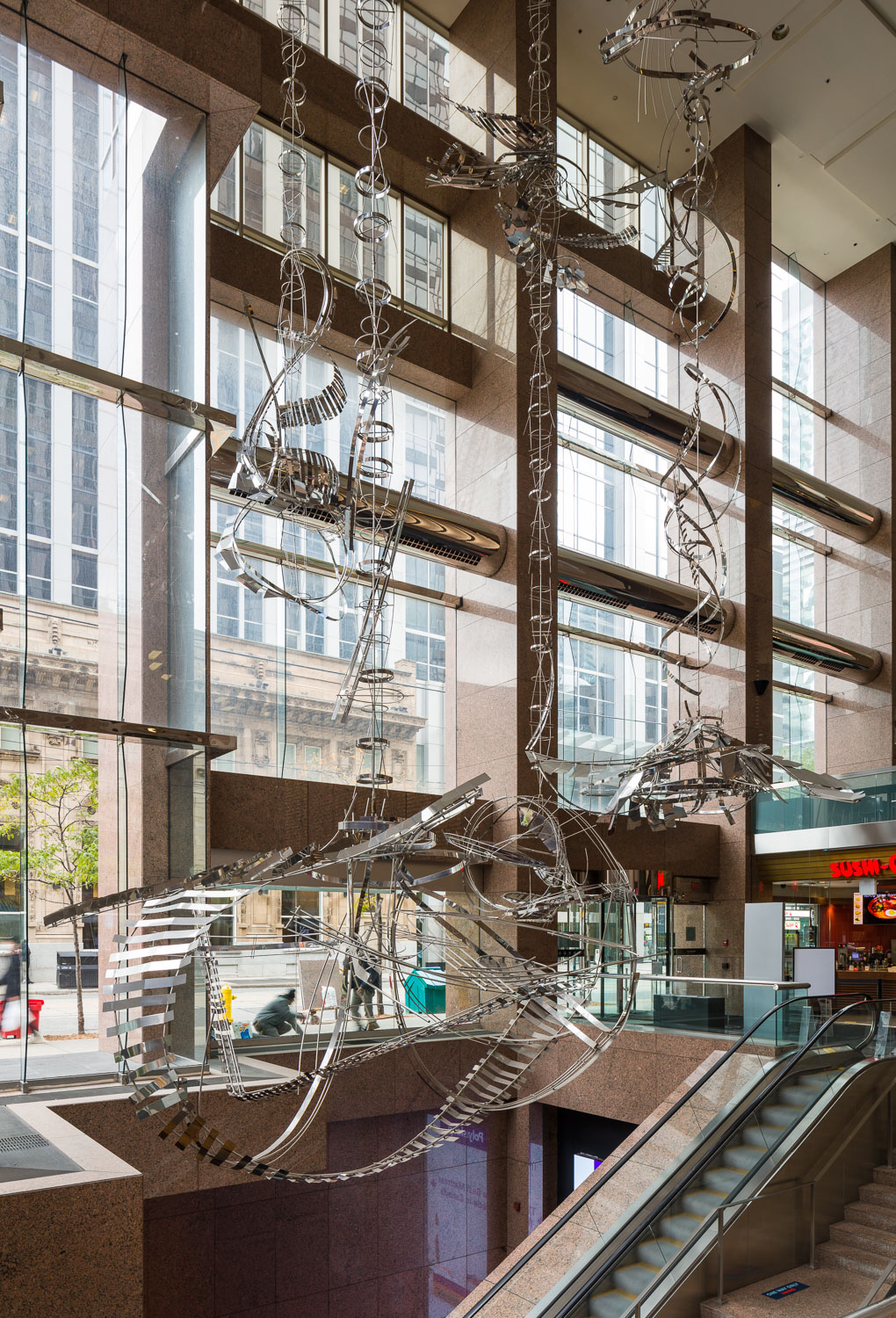Little is known about the piece Quatro but what is known is that Martin passionately believed art should not belong only in art galleries and museums, or the private collections of the few who could afford it. Long before Toronto’s Percent For Public Art Program (an official plan to encourage the inclusion of public art in all significant private sector developments across the city) became an important part of the contemporary art scene, Martin believed art should be accessible to all.
In 1956 he wrote, “Art must be an accepted part of everyone’s environment where it can teach and lend beauty and pleasure to everyday life.” Almost all of his major works have been permanently installed in public places.

